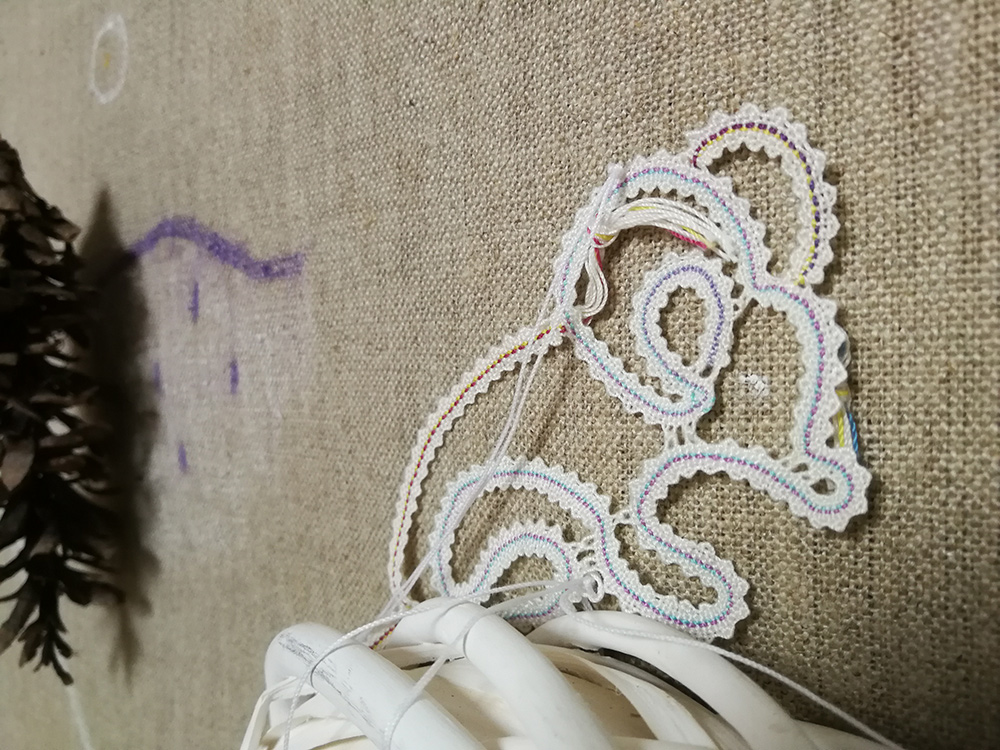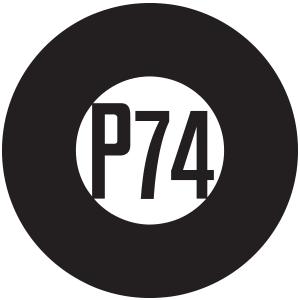
9 February – 2 March 2021
P74 Gallery
Inja Bauman belongs to the youngest generation of visual artists and the exhibition in the P74 Gallery is the first presentation of her artistic work. The majority of her works are created on canvas, using assemblage, watercolours and pastel. She pays great attention to the selection of material, as it is closely related to the content. The author expresses concern for nature, she approaches it in a personal, even spiritual way.
Most of Inja Bauman’s paintings are created on raw linen which gives them a special organic undertone. She uses natural pigments, linseed oil, and clay. The main building blocks of relief paintings are various elements she picks up from the forest ground. She later combines these with recycled and/or manufactured materials that act as a counterweight. In the painting Preserve the Ice Land (2020), we see arranged cones and bark on the canvas to which a knitted wreath and colourful nets containing bird food are added. The cones are surrounded by a simple drawing, minimal strokes indicating wings and turning the cone into an insect body. The pieces of bark, sewn on the white-painted surface, become human in a similar way, and the net becomes a fishing net. We associate lace in the shape of a bear and a penguin with the title of the work and the issue of global warming.
What initially looks like a playful, minimalist, and abstract image develops into a story illustration through closer observation. The work Shine of a Mist in a Flower (2018) includes, in addition to natural materials, the paper flowers on wire, glass-wire beads, a bird made of paper and polyvinyl. The gesture of priming the canvas, sewing on it, folding paper in the origami technique, weaving a wreath and stringing beads shows a special affinity for handicrafts and the material itself. Gathering in the forest and investing in handicrafts – the author makes the lace herself – can be understood as a gesture of attention, care, even love that accompanies her creative process. We sense meditativeness, the process of healing, cleansing oneself and, above all, the earth.
Circular shapes are often seen in Inja Bauman’s paintings and drawings. The circle is an old, semantically rich symbol that represents unity, perfection, the universe, balance, wholeness. Marko Pogačnik is the central Slovene reference in contemporary art who is intensively involved in the healing of the Earth in his projects. He sets up geopuncture circles in stone which are supposed to balance the energy flow of space and develop a dialogue between man and the Earth. It is also interesting to compare the shape of the collected pieces of bark in Inja Bauman’s paintings with stone sculptures which are an integral part of Marko Pogačnik’s geopuncture circles. In both cases, these elements represent guardians of nature.
______
Inja Bauman (1994, Maribor) completed her first level of painting studies at the Academy of Fine Arts and Design in Ljubljana, where she continues her studies. She mostly creates in the medium of painting, but also deals with drawing, illustration, video, ceramics, and creates Artist Books. She is interested in nature protection, preservation of culture and art as therapy.
